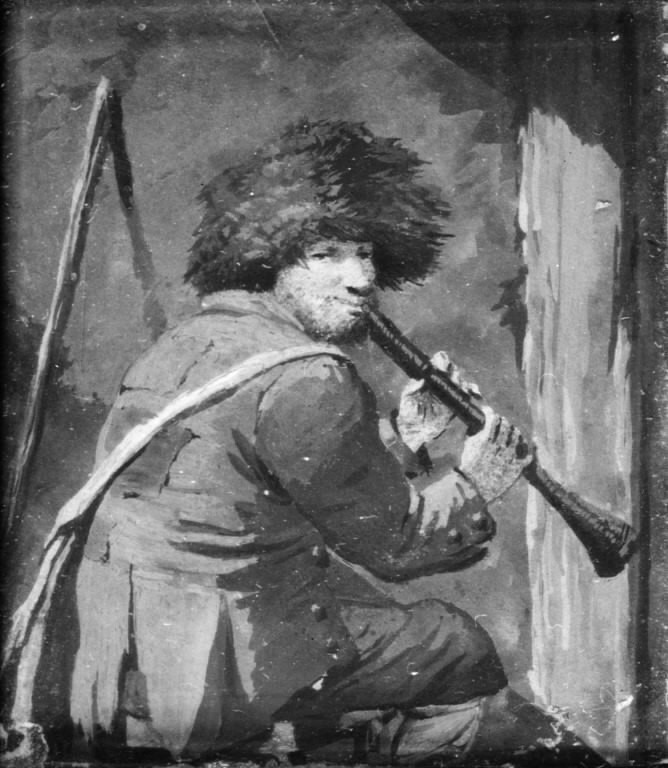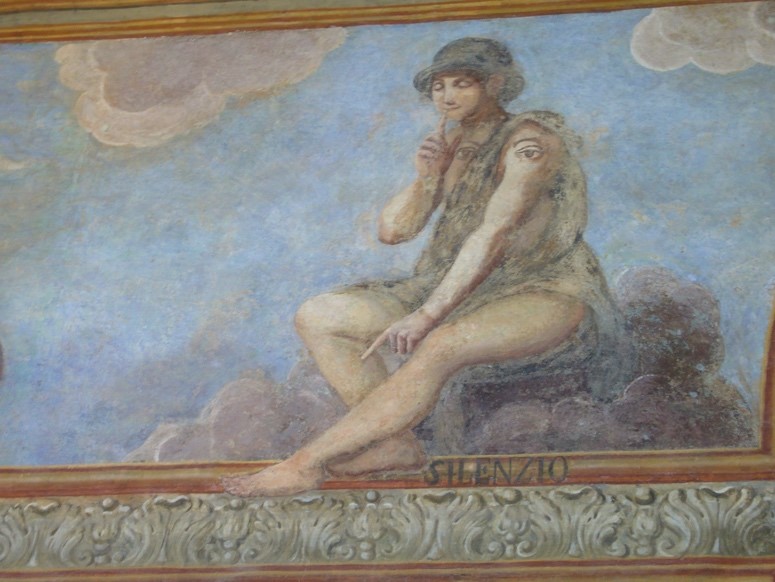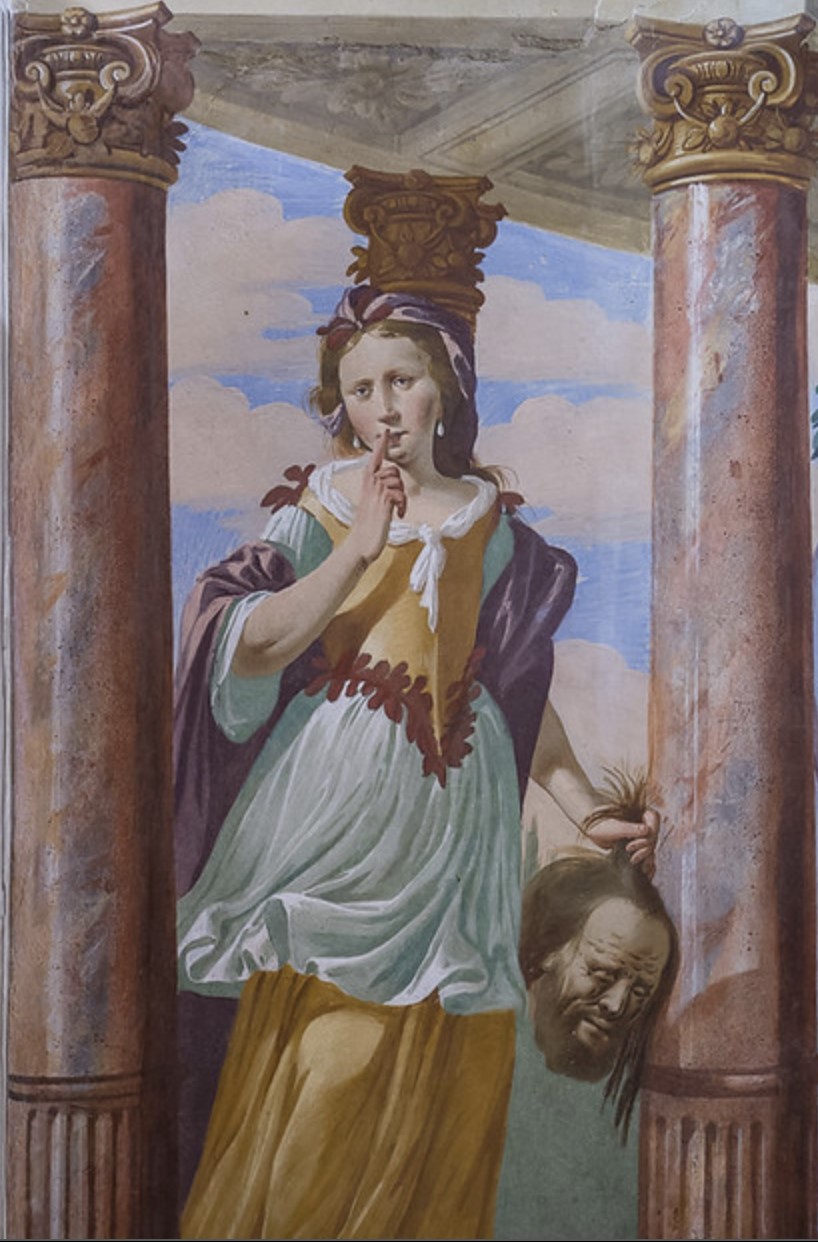Interdisciplinary Workshop: Sound, Privacy and Court Studies
 Peter Cramer, Hearing, Statens Museum for Kunst, Copenhagen
Peter Cramer, Hearing, Statens Museum for Kunst, Copenhagen
With a focus on sound, court, and privacy studies, we aim to explore the sonic history of courts and the connections between soundscapes and privacy in the early modern world in an innovative and interdisciplinary approach. The court was the space par excellence for staging and displaying power. It represents a microcosm and a privileged space to study, etiquette, privacy, and rituals through the lens of its sonic practices. Sound played a crucial role in the appropriation, display, and control of power at court. Speaking or producing sound –but also being silent– was ultimately a political performance and established protocols of ranks, power, and distance.
Historians rarely listen, musicologists listen mostly to music but rarely to other sounds and noises, and sound studies scholars mainly focus on contemporary topics. The acoustic turn allows for the first time to combine theoretical approaches from the three fields along with historical performance practices. Aurality defines a community that shares and hears the same sounds. However, people can feel both unisonance and dissonance, by hearing the same soundscape but interpreting it differently, according to their social level or gender. In order to study inclusion and exclusion in sonic interpretation, we shall therefore consider not only the members of the royal family and aristocracy, but reach across social classes and everyday life at court, to also consider servants, visitors, and workers.
The sound of the past is irremediably lost, along with listening habits. However, a keen scholarly analysis of a variety of sources allow us to reconstruct the sonic environment of the court. Written sources can be analyzed lexically to uncover words referring to sound, noise, music, silence, listening and hearing practices. Visual sources also shed light on sonic practices and can be interpreted not only with the eyes but also with the ears. Moreover, physical evidence such as original spaces and artefacts of the past have been preserved and can literally be heard and even recorded, giving access to a sonic reconstruction.
Early modern courts had little by way of visual or aural privacy. What could be heard or not is therefore highly significant and sheds new light on its social structures. The study of soundscapes reframes and redefine spaces by revealing new boundaries and thresholds. It brings new insights into private and public spaces and the overlaps between them. The porosity of sound and its power to cross physical boundaries allows us to consider outdoor sounds penetrating inside, but also indoor sounds that spill outside, expanding into surrounding areas. Bringing sound into historical studies creates a change in paradigm: what was once fixe has become dynamic, what was silent can be heard. Sound is immersive and dynamic; it travels through time and space and therefore involves temporality and humans. Sonic practices and aurality are crucial tools to study privacy because of the focus they bring on its main producer, the human body and its relationship with its environment.
 Allegory of silence, cloister of Santa Chiara, Naples (17th century)
Allegory of silence, cloister of Santa Chiara, Naples (17th century)
During this two-day workshop, the following questions will be addressed:
- How did the past sound and what can we learn about the court by studying its soundscapes?
- How can we reconsider notions of thresholds, boundaries, and privacy by studying sonic practices at court?
- How can we reconstruct sonic practices, listening and hearing strategies from the past?
- How do we read and listen to silence, noise, and sounds from the past?
The sessions will be organized with two or three presentations and a discussant animating a round table at the end of each session. The idea is to bring together specialists from the various disciplines and to foster interdisciplinarity, by testing and confronting our hypotheses in discussions and collective brainstorming.
Contact
Christine Jeanneret, Associate Professor
PI of SOUND: Soundscapes of Rosenborg (Danske Frie Forskningsfond Project 2)
christine.jeanneret@teol.ku.dk
Registration (zoom participation)
Deadline for registration: 21 June
Program
24 June: Rosenborg Castle
Zoom tech host: Natacha Klein Käfer
9.00-12.00: Session 1 Soundscapes of Rosenborg
9.00-11.00: Visit of Rosenborg Castle with a focus on its soundscapes by Peter Kristiansen (The Royal Danish Collection) and Christine Jeanneret (Centre for Privacy Studies, University of Copenhagen)
11.00-11.15 Coffee break
11.15-12.00 Round table on court and soundscapes



Wallpainting in the Winter Room, Rosenborg Castle
13.00-16.00 Session 2: The Danish Court and the City of Copenhagen
Discussant and chair: Helen Watanabe-O’Kelly (University of Oxford)
13.00-13.30 Michael Bregnsbo (University of Southern Denmark), From Public Figure to Private Affair: Royal Mistresses and Their Role at Court
13.30-14.00 Cathleen Sarti (University of Oxford), Speaking and Listening at the Danish Court: Impressions from Foreign Visitors
14.00-14.30 Jakob Ingemann Parby (Museum of Copenhagen) and Kasper H. Andersen (Moesgaard Museum), Soundscapes of Copenhagen in the Sixteenth and Seventeenth Centuries
14.30-15.00 Coffee break
15.00-16.00 Round table on court studies
25 June: Centre for Privacy Studies, University of Copenhagen
Zoom tech host: Frank Ejby Poulsen
9.00-12.00 Session 3: Sonic History
Discussant and chair: Jakob Ingemann Parby (Museum of Copenhagen)
9.00-9.30 Melissa van Drie, Sonic Architectures of Power: The Case of a Royal Dining Room Table, Practices of Silencing and Attuning to the Real Sounds of Food Making Pasts,
9.30-10.00 Nick Hammond (University of Cambridge), Studying the Sound Worlds of Paris: Where Street and Court Collide
10.00-10.30 Mylène Pardoen (Université Saint-Étienne de Lyon), Soundscape Archeology: Hearing the Past is Possible! Presentation in French with a translated hand-out: Archéologie du paysage sonore: entendre le passé, c’est possible !
10.30-11.00 Coffee break
11.00-12.00 Round table on sonic history
13.00-16.00 Session 4: Privacy Studies
Discussant and chair: Mette Birkendal Bruun
13.00-13.30 Sanne Maekelberg (Centre for Privacy Studies, University of Copenhagen), Privacy in Prison: Impressions of Leonora Christina during her Captivity at Hammershus and Copenhagen Castle
13.30-14.00 Jesper Jakobsen (Centre for Privacy Studies, University of Copenhagen), Regulating urban noise. Notions of disruptive sound and privacy in early modern Altona, c. 1750-1800
14.00-14.30 Kirsten Marie Raahauge (Royal Danish Academy), On Thresholds, Boundaries, Filters and Privacy: An Anthropological Perspective
14.30-15.00 Coffee break
15.00-16.00 Round table on privacy studies

Saletta del Silenzio: Palazzo Salmatoris, Cherasco
Funded by Den Danske Frie Forskningsfond as part of SOUND: Soundscapes of Rosenborg, DFF Research Project 2
